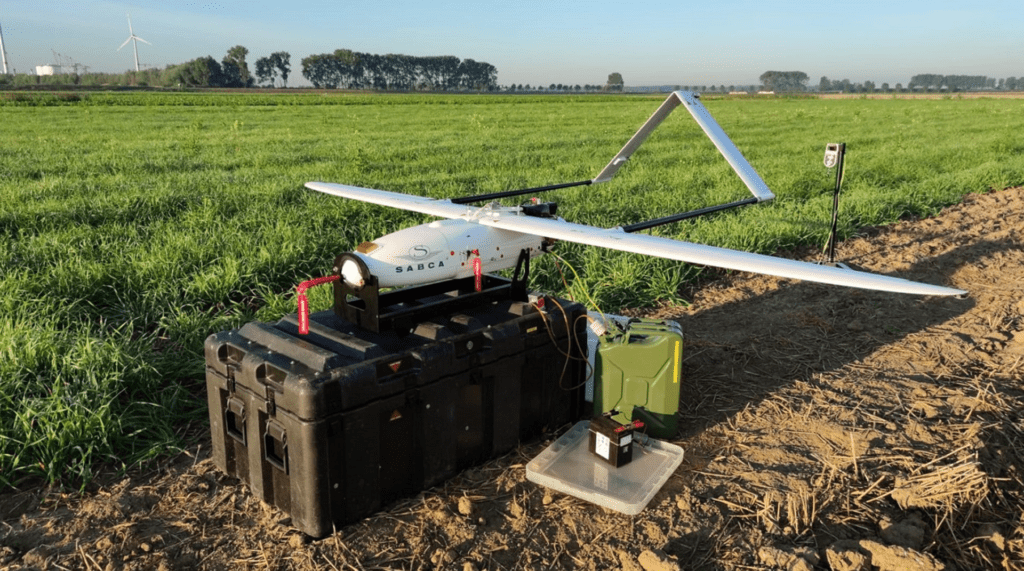The Port of Antwerp is conducting tests with a fixed-wing security drone.
The drone can fly at high altitudes and has a powerful camera, allowing for a unique view of the entire port.
The hope is that the drone will provide critical support to security services and help in responses to a variety of potential incident scenarios.
“The port of Antwerp covers more than 120 km² and is part of the critical infrastructure of our country,” reads a press release from the port.
“Thanks to the unique perspective from the air, drones can make an important contribution to the general safety in this complex environment.”
This drone in particular can fly for over eight hours, taking images with a camera that can zoom up to 30x from a height of 280 metres.
Four incident scenarios were tested with the drone over the course of a week: a container fire, rescuing a person in distress on top of a windmill, rescuing a drowning person and rescuing a man overboard.
The images recorded by the unmanned aircraft of each emergency situation serve to provide insight into the possibilities of using this type of drone in the port environment.
“In the near future, it will be impossible to imagine going without drones when carrying out risky tasks,” said Thibauld Jongen, CEO of Sabca, the technology company partnering with the port for the project.
“Thanks to these demonstrations in collaboration with the Port of Antwerp, we are demonstrating that we can make various operations more efficient and safer by using unmanned aircraft for inspections, transport of goods and surveillance.”

Image from Port of Antwerp
A study early this year that looked at counterfeiting in shipping containers ranked Belgium as one of the top ten ports of entry for fake goods in the EU, due to the ports there being among the largest on the continent.
The Port of Antwerp has also been, at times, a playground for organised crime and drug trafficking, especially cocaine.
Future tasks for drones could include inspections of infrastructure, surveillance and monitoring, incident management, berth management and oil slick or floating debris detection.
“Drones are a lever in carrying out our core tasks as port authority, given the enormous surface area of the port area,” said Bob Spanoghe, an Innovation Platform Manager with Port of Antwerp.
“Our aim is to have an operational network of drones by 2022 to provide a ‘live feed’ of the various port activities, a rewarding tool for the entire port community. In this way, we will keep in touch with what is happening in the port and work towards a safe, efficient and smart port: the port of the future.”
This isn't the port's first experience with unmanned aircraft: they ran tests at the start of this year with a different type of drone, as well.
The drone tests were done in collaboration with Hulpverleningszone Waasland, Fire Brigade Zone Antwerp and technology partner Sabca.

